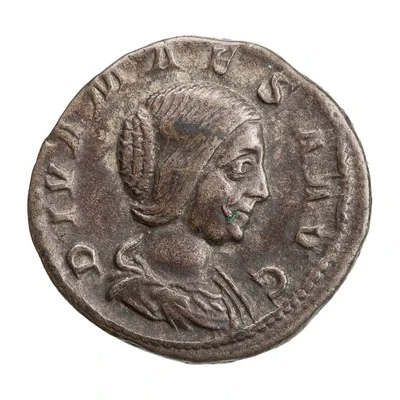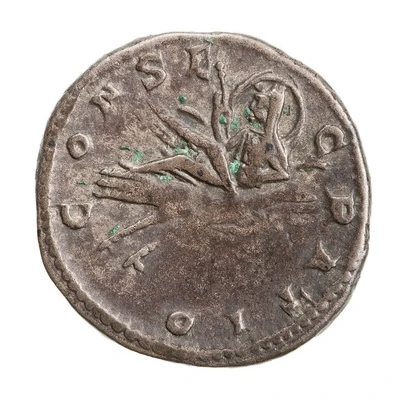


© American Numismatic Society (ANS)
Sestertius - Julia Paula AEQVITAS PVBLICA; Tres Monetae
| Bronze | 3.8 g | 19 mm |
| Issuer | Rome › Roman Empire (27 BC - 395 AD) |
|---|---|
| Emperor | Elagabalus (Sextus Varius Avitus Basianus) (218-222) |
| Type | Standard circulation coin |
| Years | 219-220 |
| Value | Sestertius (⅛) |
| Currency | Antoninianus, Reform of Caracalla (AD 215 – 301) |
| Composition | Bronze |
| Weight | 3.8 g |
| Diameter | 19 mm |
| Shape | Round (irregular) |
| Technique | Hammered |
| Demonetized | Yes |
| Updated | 2024-10-05 |
| Numista | N#277069 |
|---|---|
| Rarity index | 100% |
Reverse
The Three Monetae, all draped, standing left, each holding scales in right hand and cornucopiae in left hand; at their feet, heaps of metal.
Script: Latin
Lettering: AEQVITAS PVBLICA
Translation:
Aequitas Publica.
Equity of the public.
Comment
Mass varies: 3.41–4.09 g;Diameter varies: 18.75–18.85 mm;
Example of this type:
American Numismatic Society (ANS)
Source:
Online Coins of the Roman Empire (OCRE)
Interesting fact
The Sestertius coin featuring Julia Paula, also known as the "Tres Monetae" coin, is notable for its unique design. It features three busts of Roman empresses on one side, including Julia Paula, who was the wife of Emperor Septimius Severus. This coin was minted during a time when women were increasingly being featured on Roman coins, reflecting their growing influence in society. The coin's design was meant to promote the idea of the empress as a symbol of stability and prosperity, and it's an interesting example of how currency can be used as a tool for political messaging.